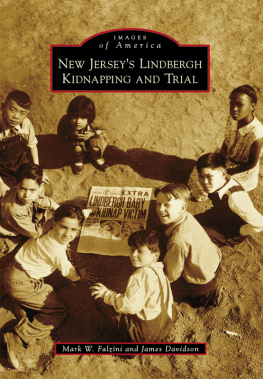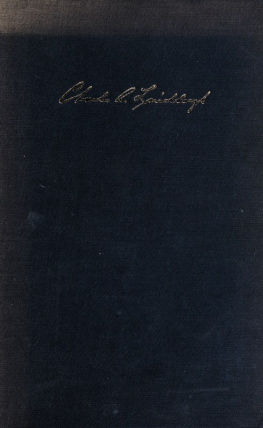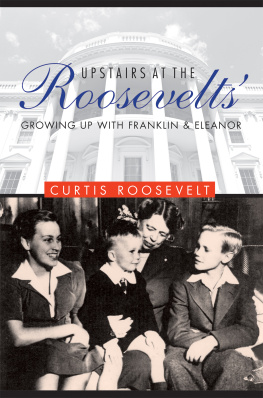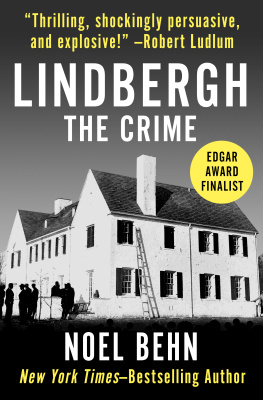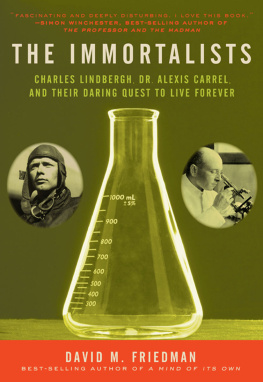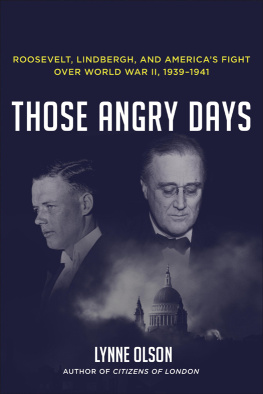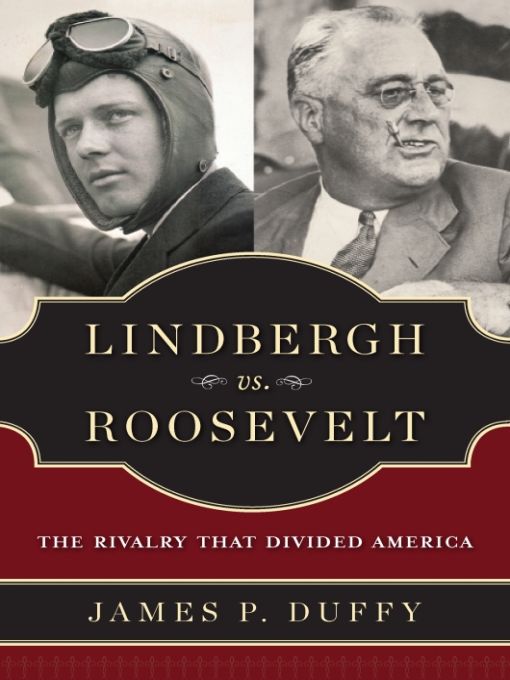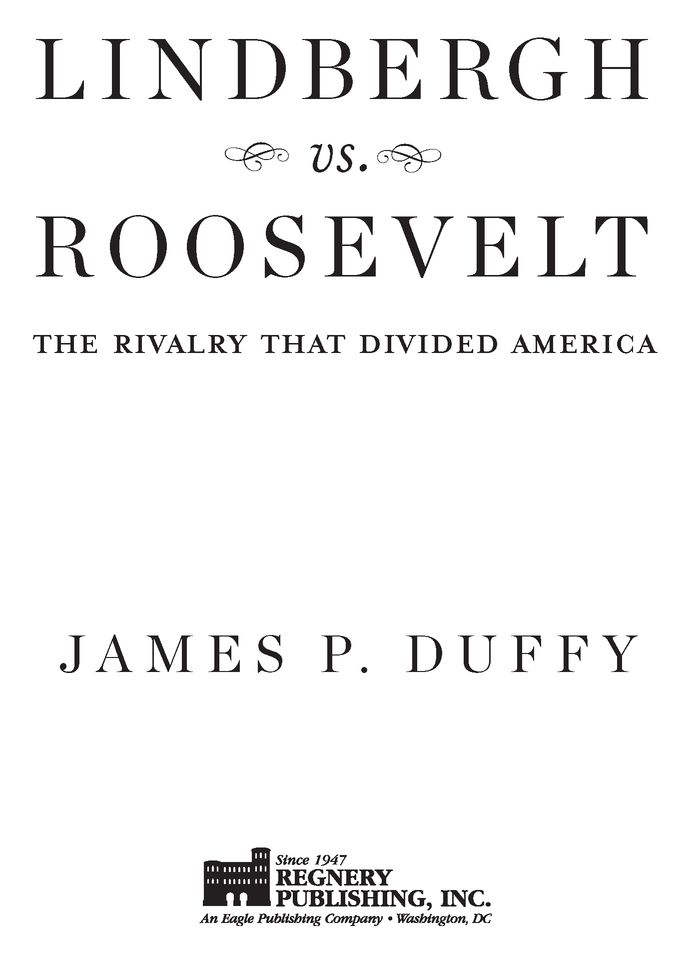Table of Contents
For Kathy
PREFACE
I began thinking about writing this book more than thirty years ago. I started collecting various research items including books, magazine and journal articles, and newspaper reports. I hunted in libraries and archives for bits of information. Anything relating to Charles Lindbergh found its way into several file boxes that I lugged with me as I moved from place to place over these many years.
Why bother, you might ask. Well, something about Lindbergh troubled me deeply. But it was not Lindbergh himself I found disconcertingit was what happened to him.
Over the intervening years, I wrote and published fifteen books. Between working on each book, I would return to Lindbergh, even if only for brief periods. I read biographies of Lindbergh and the published diaries of his wife, Anne Morrow Lindbergh, as well as his autobiographical volumes and books on the noninterventionist movement in the pre-World War II years. I also waded through numerous biographies of Lindberghs arch-opponent, President Franklin D. Roosevelt, and books by and about members of FDRs administration.
In all that time, however, I made no serious effort to obtain a publishing contract for a book about the rivalry that rocked America twice during the first half of the twentieth century. For one thing, I was not sure anyone else cared about what happened to Lindberghs reputation. Just mentioning Lindberghs name usually brought a quizzical look and the question, Wasnt he a Nazi?or equally devastating, Wasnt he an anti-Semite?
A better question is: how could a true American hero have been slandered the way Lindbergh was? I believe the explanation lies in the fact that twice he opposed the most powerful man in America, President Roosevelt. Because of that, he became the target of a venomous smear campaign by the White House and the presidents supporters. I expected it would be difficult to make people understand that FDR and those around him could stoop so low as to outright demonize someone for simply taking an opposing positionespecially because many people were raised to think FDR was the countrys savior, the man who pulled us out of the Great Depression and won the greatest war in history.
But the publics opinion of Roosevelt has changed over the last two decades. Many serious writers have published somber analyses concluding that Roosevelts big spending programs actually prolonged the Depression. It was only ended by a world war that put millions of men and women to work and got factories running around the clock.
Then in 2008, a presidential candidate widely fancied as a new FDR won the White House. He had issued a clarion call for change, and millions responded to it. But soon, many began to question what it was he wanted to change. They thought he was going to change Washington and the way business is conducted there, but discovered they were wrong. President Obama, like FDR, is an elitist who has filled his administration with other elitists and his favorite experts. This president doesnt want to change Washington, but America itself. The response was powerful as tens of thousands of voters attended townhall meetings with their senators and congressional representatives and spoke out against policies they believed were driving the country into bankruptcy. Hundreds of thousands united in the grassroots tea party movement and attended rallies across the country.
Then the name-calling and demonizing began by the White House, the congressional leadership, and the mainstream media that supported the president. People who protested Obamas policies were racists, Nazis, and unpatriotic. Speaker of the House Nancy Pelosi called tea parties an Astroturf operation, implying its adherents were shills being organized and manipulated by some higher authority. Meanwhile, other critics made the opposite chargethat tea partiers were an unruly, violence-prone mob.
A special dose of malice was reserved for former governor and vice presidential candidate Sarah Palin, radio and TV host Glenn Beck, and talk radio king Rush Limbaugh. The vindictive attitude underlying the whole campaign, and the desire to see the Lefts political opponents not just proved wrong but destroyed, was encapsulated in a post about Limbaugh on JournoList. In that forum for leftwing journalists and commentators, Sarah Spitz, producer for an affiliate of National Public Radio, testified she would laugh loudly like a maniac and watch his eyes bug out if Limbaugh had a heart attack. I never knew I had this much hate in me, she wrote. But he deserves it.
For me, it was Lindberghs fate playing out again, but with different victims. He had dared to speak out against the policies of a president the Left revered, and he was maligned in much the same way as Obamas opponents are today.
Now, I thought, readers might be interested in what happened to Lindbergh, because they are witness to the same thing happening again. Todays slanders must not be allowed to become accepted historical fact as the attacks on Lindbergh became. Lindbergh never really fought back against his attackers, which is a shame, because he had truth on his side, and truth is always a powerful ally.
I tell here the story of Charles Lindberghs words, deeds, and beliefs, how they were deliberately misrepresented in order to smear him, and who attacked him and why. I hope to prompt readers once again to view Lindbergh for what he really was: an American patriot who had the audacity to stand up to a president whose policies he believed would damage the country.
James P. Duffy
INTRODUCTION
THE LINDBERGH LEGACY
Noted historian and best-selling author David McCullough called Charles Lindbergh one of the most celebrated figures of the century, a man more complicated and contradictory than often portrayed. He added, For all that has been written and said about him, he remains, in many ways, a mystery.
Following his historic non-stop flight from New York to Paris on May 20-21, 1927, the shy, handsome young aviator became the most honored private citizen on earth. Nations showered him with decorations, and crowds followed him wherever he went. Time magazine put his image on its cover and made him its first Man of the Year. He had undoubtedly become the most famous man in the world with his flight across the Atlantica feat that six aviators had already perished trying to achieve. His flight out of France to Belgium on May 28, 1927, the first leg of his return trip to America, was watched by uncounted hundreds of thousands of people crammed into the streets of Paris looking up at the great aviator circling the Eiffel Tower. When he landed in Belgium, it took most of the Brussels police force and some five thousand troops with fixed bayonets to keep the cheering throng from rushing him and his now-famous single-engine airplane, the Spirit of St. Louis. In Britain, 150,000 people turned out to welcome him. In Belgium, he met privately with the King and Queen and in London with the King and the Prince of Wales.
When he arrived back in America, tens of thousands turned out at a time to greet the Lone Eagle, as the press called him. Offers poured in of financial rewards for speaking tours, product endorsements, and just about anything else to which some promoter could attach Lindberghs name. He was not wealthy by a long shot, so he had to find some way to earn a living. It was, he said, essential that I find ways of earning more money that would leave me as free as possible to pursue the development of aviation.





